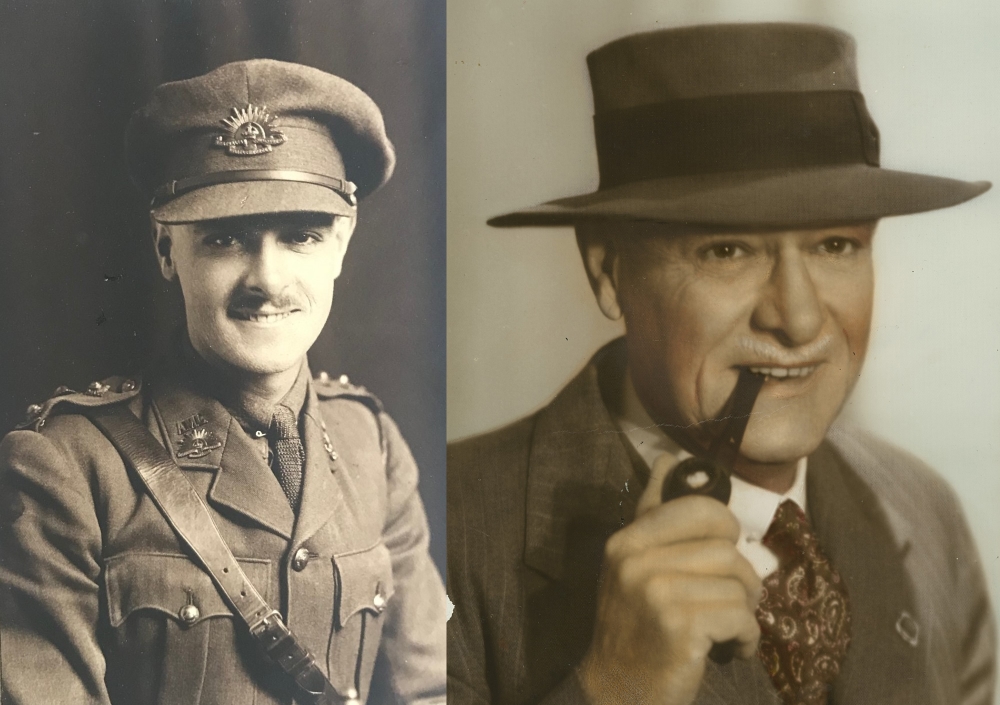
A LIFE OF SERVICE
Idris Morgan was born in Bourke NSW in 1891 where his father, Rev. Thomas Morgan, was Superintendent of Missions for the Presbyterian Church.
After the family moved to Sydney, Idris completed his secondary education at Fort Street High School, matriculating with 1st Class Honours in English and French.
He went on to undertake a degree in Medicine at Sydney University, graduating in 1915 aged 23 having been awarded The University Medal.
Within months of his graduation Idris had enlisted in the AIF, been taken into the Australian Army Medical Corps with the rank of Captain and embarked for Egypt on 11 October 1915.
After serving in Base Hospitals in Egypt and France, the Doc was transferred to the 19th Battalion as Regimental Medical Officer on 30 March 1917.
A Regimental Aid Post (“RAP”) was the first step in the medical evacuation chain. The post was usually located about 700 yards (640m) behind the front.
A Regimental Medical Officer and five other ranks from the Australian Army Medical Corps staffed most posts. Infantry battalions assigned at least 16 soldiers to act as stretcher-bearers.
The RAP was a vital point of liaison with the field ambulance units set up further behind the front. The post controlled everything in front of its position. Field ambulances controlled the medical evacuation chain behind the post.
Medical officers tried to set up regimental aid posts in the most suitable places. This wasn’t always possible.
Major Keith Doig, the Regimental Medical Officer for 60th Battalion, noted in his diary on 26 November 1916 that his RAP:
“…was a deep German dug-out but unfortunately right in the middle of the barrage line and machine gunning.” Source – Anzac Portal – link here.
In an interview published in Newcastle Sun in 1967 and 1980 The Doc recounted his having refereed both rugby and soccer matches between AIF Units taking breaks behind the front lines. He is quoted as saying:
“While I had never played soccer, my experience in hockey gave me some insight…..
The players seemed satisfied…. Then of course, that may have been connected to my being an Officer, or, they did not know the Rules any better than I did.”
In 1917, the 19th was involved in the follow-up of German forces after their retreat to the Hindenburg Line and was one of four battalions to defeat a counter-stroke by a German force, almost five times as strong, at Lagincourt. The Battalion took part in three major battles before the year was out, second Bullecourt (3-4 May) in France, and Menin Road (20-22 September) and Poelcappelle (9-10 October) in Belgium. Source – Australian War Memorial – link here.

On 9 April 1917 Dr Morgan was Mentioned in Despatches for his bravery in bringing wounded Diggers into cover. Below is the Certificate issued to him, signed by Winston Churchill.
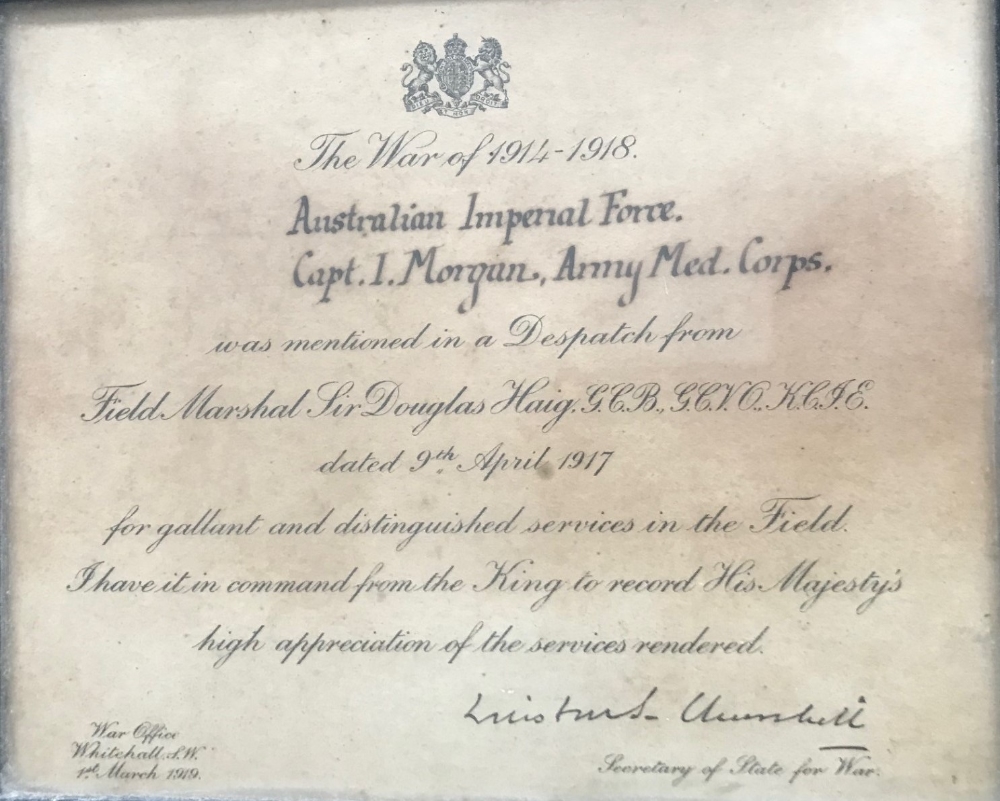
On 7 October 1917, during the fighting immediately preceding the Battle of Poelcappelle, the Doc became one of the thousands wounded in this War.
John Taylor, who is researching the Club’s history, interviewed Dr Morgan’s son Tom, last year. The following is an extract from that interview:
Idris didn’t talk a great deal to his son Tom about the war but he did tell him how he was wounded.
As explained to Tom by his father, after heavy rain and heavy shelling the ground was very heavily pockmarked, and it was churned up into soft earth. The whole thing became mud, and no-one could move on it except by these duckboards. Soldiers had to walk or move across them.
‘’Dad would go out on those duckboards for anyone who was injured and carry them back.’’
“He was bringing in a wounded soldier …. He told me that he heard a shell coming, dived off the duckboard to the nearest hole and was in midair when the shell struck. It took off the lower part of his leg just above the ankle. He tied his own tourniquet and cut through the few remaining pieces of skin and tissue that hadn’t been severed by the shell and he then crawled back along the duckboard. He was then sent to England.’’
The following is copied from the AIF Service Record:
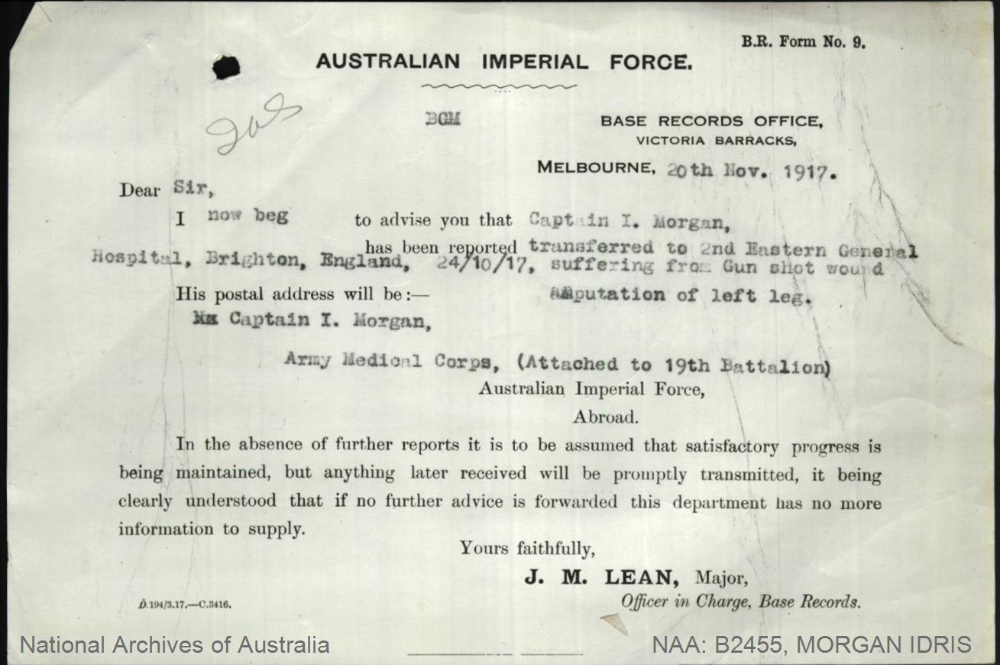
He was back at work in an Australian Army Hospital in England on 20 January 1918, just over three months after having his left leg amputated. The following is again taken from John’s interview with Tom Morgan:
‘’Dad went to hospital in England and was one of the early returned soldiers to have a wooden leg.’’ Tom said.
‘’He told me they weren’t very advanced in those days but that he encouraged others in the hospital with limb loss and wooden limbs to learn to use their limbs efficiently and that he also helped with morale in the hospital.’’
Promoted to the rank of Major on 9 July 1918, he continued to treat and support wounded Diggers in England until he embarked at Liverpool on 16 November 1918 to return home, arriving in January 1919.
By 1920 Newcastle Herald articles have him working at The Royal Newcastle and Mater Hospitals. By at least 1932 he is in private practice in Bolton Street Newcastle.
Researching the Newcastle Herald and Newcastle Sun archives it becomes clear that The Doc had several passions, most notably, Medicine, Returned Servicemen, Education, Community Service, Swimming and Rugby.
The extraordinary number of references to Dr Morgan in the Newcastle Newspapers archives over decades attests to a life quite obviously devoted to Community.
In his interview with John Taylor, Tom Morgan fondly recounted shooting trips for quail and duck with his father and brother.
‘’Shooting was one of the sports Dad really loved. He gave me an English shotgun when I was 16. We always had meat on the table.’’ Tom said.
Tom described his dad as a good father figure, enthusiastic, natural speaker, friendly and would go out of his way to help people. ‘’That was his nature and I think that is probably why he took up medicine.”
There are countless references in the newspaper archives of his appearances, as Guest Speaker at Charitable, Community and Sporting Group functions, either by direct invitation or as a representative of Rotary Newcastle, for example:
- The Workers Educational Association – lectures on Ancient Egypt, The History of Medicine, The Rise and Fall of the Roman Empire and these are a few of many.
- The RSL – advice on medical benefits and pension appeals for Returned Servicemen.
- Numerous Scout Groups – instruction in first aid.
- There are numerous references to him giving advice on diet and basic hygiene to a wide range of Community groups and associations.
- He conducted classes for first responders of the Newcastle Ambulance Service
One speech in particular was one he gave to members of the Newcastle Business and Professional Women’s Club and reported in the Newcastle Herald on 5 May 1939 under the caption “Doctor Advocates Home Training Before Marriage. The full Herald article can be read here.
Dr Morgan was one of the Foundation Directors of the Rotary Club of Newcastle. He was the inaugural Secretary, served in that role until he became President and was the initiator of the Club’s first community service project – the oversight of the survey of crippled children in the Club’s region (mainly due to polio) and went on to establish the Newcastle and Northern Region’s Crippled Children’s Association. He established diagnostic investigations, education programs for crippled children and was behind the establishment of the recreational facility at Myuna Bay for social and exercise programs for crippled children.
Rotary Club’s members would drive the children to the Myuna Bay facility, which is currently being demolished, and assist them with the exercise programs.
As a Medical Practitioner he was held in the highest regard, being called to give expert medical evidence in civil and criminal courts over many years, including on the subject of medical hypnosis.
In 1953 the Army flew The Doc to Korea to give expert evidence in the Court Martial of an Australian corporal charged with the murder of an American soldier. The corporal was found to have a mental disability.
Research in local newspaper archives produces references to The Doc being the Honorary Medical Officer of many amateur sporting bodies and community groups throughout Newcastle.
Dr Morgan held a special regard for those of his patients who were returned Diggers, from both wars. And there were many of them. He was particularly concerned with their mental health but also took a personal interest in those with social and personal difficulties. In one of the extensive articles in the Newcastle Sun he is quoted, referencing his Digger patients, “They let you know what they are thinking, sometimes in good old Digger terms. This I like.”
He was a member of the Newcastle Repatriation Committee which had the responsibility of assisting Diggers to find and return to work. The Doc also contributed to assisting Diggers through his work with the RSL and Gallipoli Legion.
In 1932 he became aware of unemployed Diggers, some with children, living rough in the “Diggers Camp” in Hall Street Newcastle (near what is now Market Town). He set up the Diggers Relief Fund and personally collected clothing and other items to assist them. Linked here are two Newcastle Herald articles covering the Camp and the Fund.
On 24 April 1934 Dr Morgan gave an Anzac address to a Rotary Club lunch which was reported in full in the Newcastle Herald and can be read here.
As for sport, The Doc was up for anything, but swimming and rugby clearly topped the list. Before his Military Service he was an avid surf swimmer and member of Bondi Surf Club. While the loss of his leg curtailed his surf swimming it did not deter or prevent him being involved and competing in baths events.
He became a competitor in the Diggers, Newcastle Premier and Northern Districts Swimming Clubs and Newcastle baths competitions conducted by Newcastle Surf Club while also assisting events run by these clubs as starter, judge, recorder, and in any other capacity. Dr Morgan also served terms as President of the Northern Districts Swimming and Newcastle Surf Clubs.
Several years after returning from the war Dr Morgan with two other Diggers competed in a 3-man team relay event at the NSW Diggers State Swimming Championships. The Doc competed with his one leg. Of the other two, one had a bullet still lodged in his back and the other, a bullet still in his knee. They finished third in a field of eight.
At Sydney University Dr Morgan played hockey, for which he was awarded a University Blue and some rugby, (when hockey commitments permitted), describing himself as, “just an ordinary player.”
His service to rugby would be far above the ordinary.
In 1924 Rugby in Newcastle was reborn after a ten-year suspension due to the player drain to enlistment in the Services. Idris Morgan was elected Chairman of Newcastle Rugby’s Management Committee and appointed the Union’s honorary Medical Officer, holding the latter position for some 40 years, “…. always ready to give free service to injured players from any club. He can be seen at any game, ready to attend players.” [Newcastle Herald 21 August 1958]
He became a Life Member of the Newcastle Rugby Union in 1958.
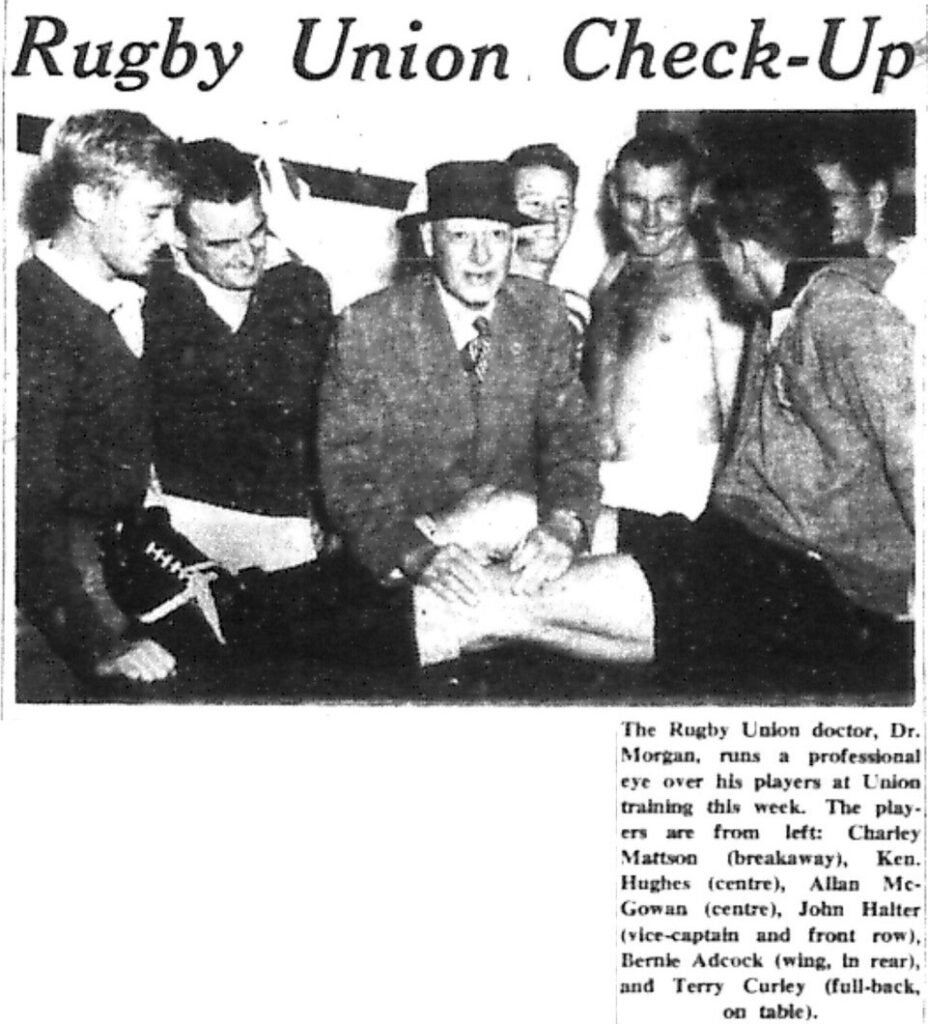
The Doc added to an already very busy life when he was elected President of the Cooks Hill Surf Club RUFC at the foundation meeting of that Club on 1st March 1927. The full minutes of that meeting can read/downloaded here.
A prominent foundation member, mentioned in those minutes, is Sid Malcolm (Wallaby #242 – 18 Tests 1927-1934) who would later play a part in the coaching of the very first players for Merewether Carlton.
In June 1930 Dr Morgan was no doubt a leading figure in the amalgamation of his club, which earlier in 1930 had changed its name to Merewether RUFC, and Carlton RUFC.
There is no documented record of the agreement to amalgamate. The next available record is the minutes of the first AGM of Merewether Carlton RUFC held in the old greenroom on 12 March 1931 when Dr Morgan and Mr E R Caldwell (formerly Carlton RUFC President) were elected Presidents.
He and Mr Caldwell continued to share the position until February 1936 when Dr Morgan was elected in his own right. He was elected, unopposed, each and every year until he stood down as President of Merewether Carlton on 16 December 1974.
The Doc bookended the 1927 and 1974 years with 1st Grade Premierships.
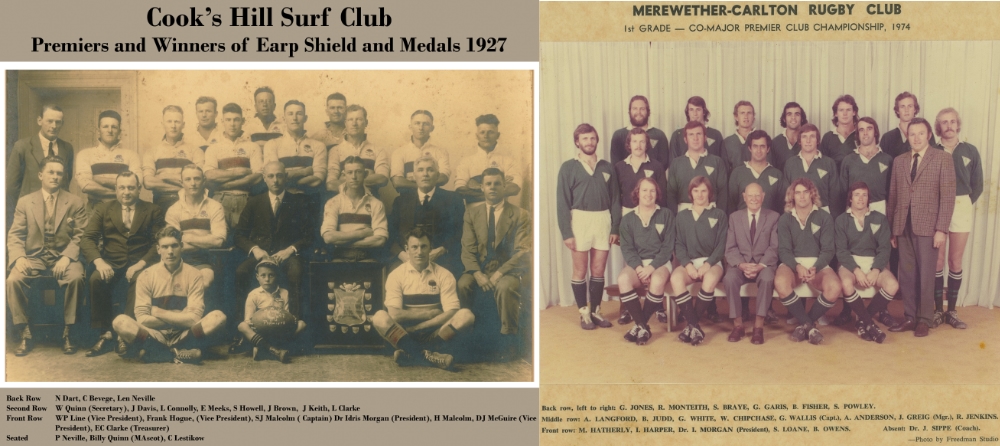
He was a constant presence at games, always up for a chat. He could have a conversation with anyone about pretty well anything. The Doc knew every player’s name, even down to those playing in Junior teams.
He didn’t lack a sense of humour either. Players from the early 70’s will remember an incident when The Doc got his prosthetic foot caught under the brake pedal and put his car into the steel and wire fence surrounding the No.2 playing area. Given that this was in front of the crowd on the “Green Hill”, it followed that he got a a fair spray of advice on driving, which he took in great humour.
He was everybody’s Doctor. His ‘Trench’ sideline treatment for injured players was legendary.
It was always obvious that he enjoyed being around the members, the players and the game.
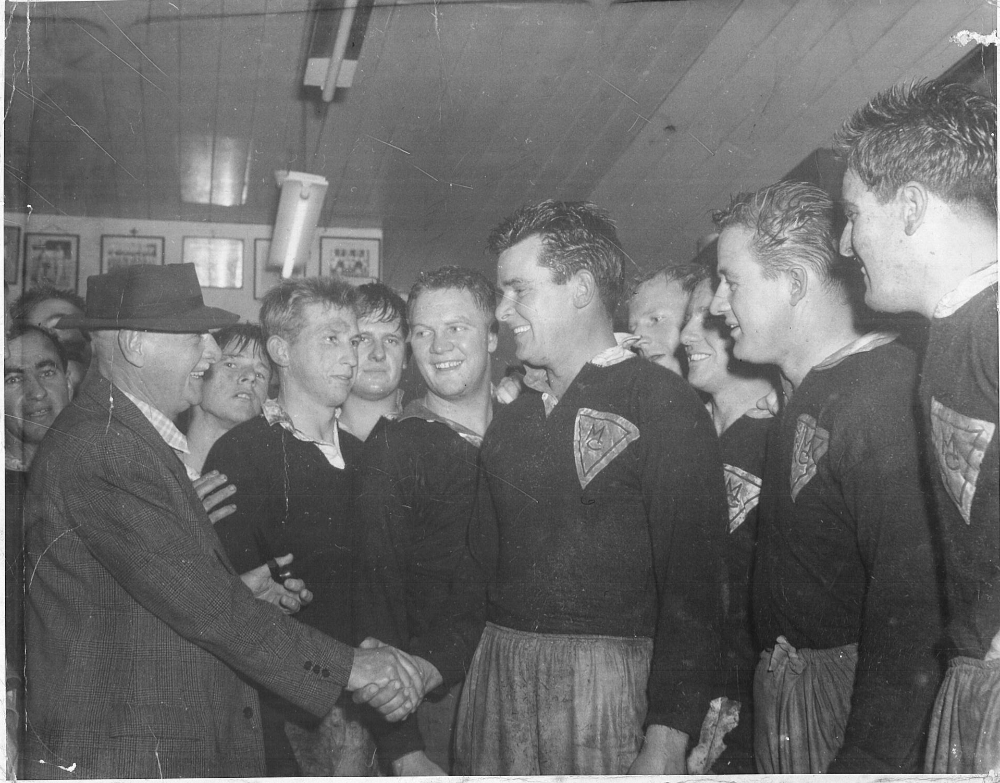 “Mick Mewburn 100 1st Grade Games 1956”
“Mick Mewburn 100 1st Grade Games 1956”
As for The Doc’s own reflections on his years at Merewether Carlton, that is best left to him:
“It is an experience that has been most rewarding and one I would not have willingly missed. I’ve been fortunate to be associated with many grand chaps – the ordinary player and member as well as those who were outstanding club and representative players – and there were many.”
“It was the spirit that counted, and Carlton never lacked it. It’s a great club and an honour to belong to it, let alone be its President.”
“Wouldn’t have missed the experience for anything. Like all Diggers, a great bunch of fellows.”
The above quotes are taken from extensive interview articles published in Newcastle Sun in 1967 and 1980. The full articles are available by following the links. Newcastle Sun article 1967 and Newcastle Sun 1980.
Doc Morgan died in May 1980 having just seen his Club kick off its 51st season and 50th Anniversary Year. After finishing 4th Merewether Carlton 16 defeated Wanderers 3 in the 1st Grade Grand Final on 13 September 1980.
 As Anzac Day approaches, we continue a proud tradition of honouring those who served both our nation and our club. In years past, we were privileged to receive stories unearthed by our dedicated club historian, Steve “Chisel” Gill, who devoted countless hours to highlighting the lives of club members who answered the call of duty.
As Anzac Day approaches, we continue a proud tradition of honouring those who served both our nation and our club. In years past, we were privileged to receive stories unearthed by our dedicated club historian, Steve “Chisel” Gill, who devoted countless hours to highlighting the lives of club members who answered the call of duty.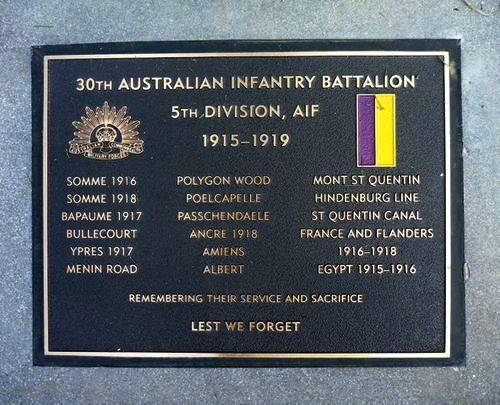
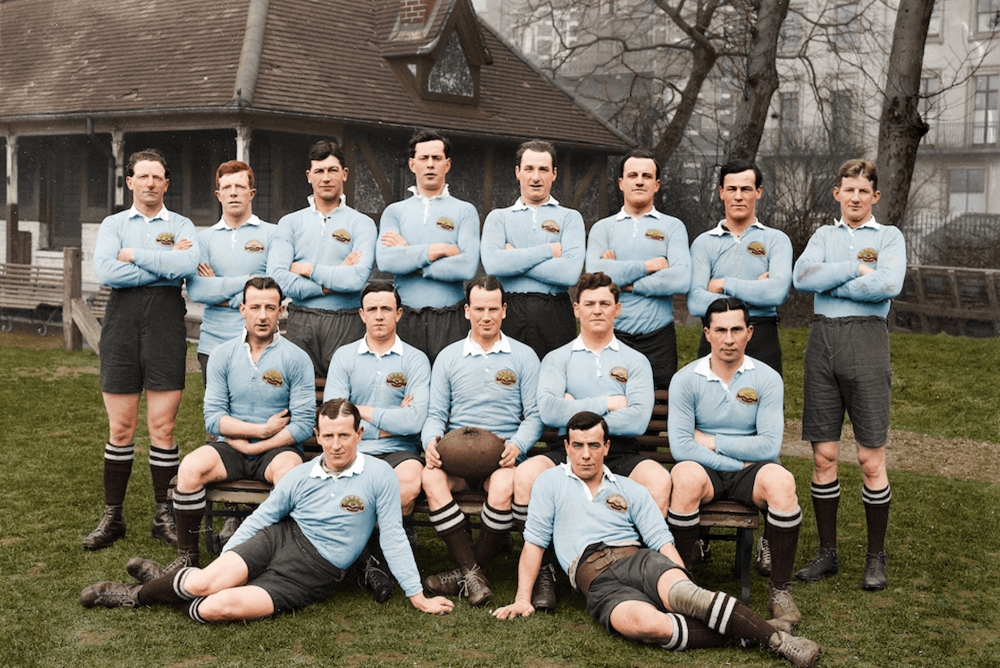
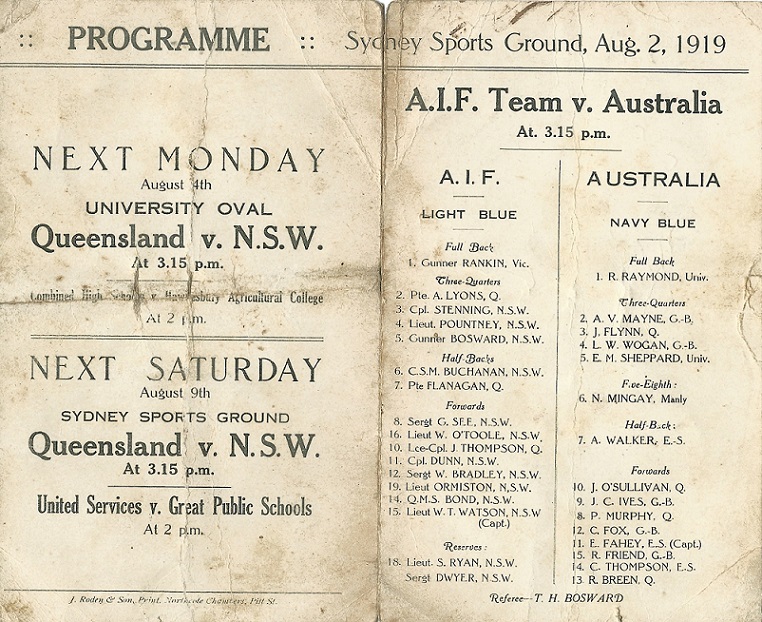
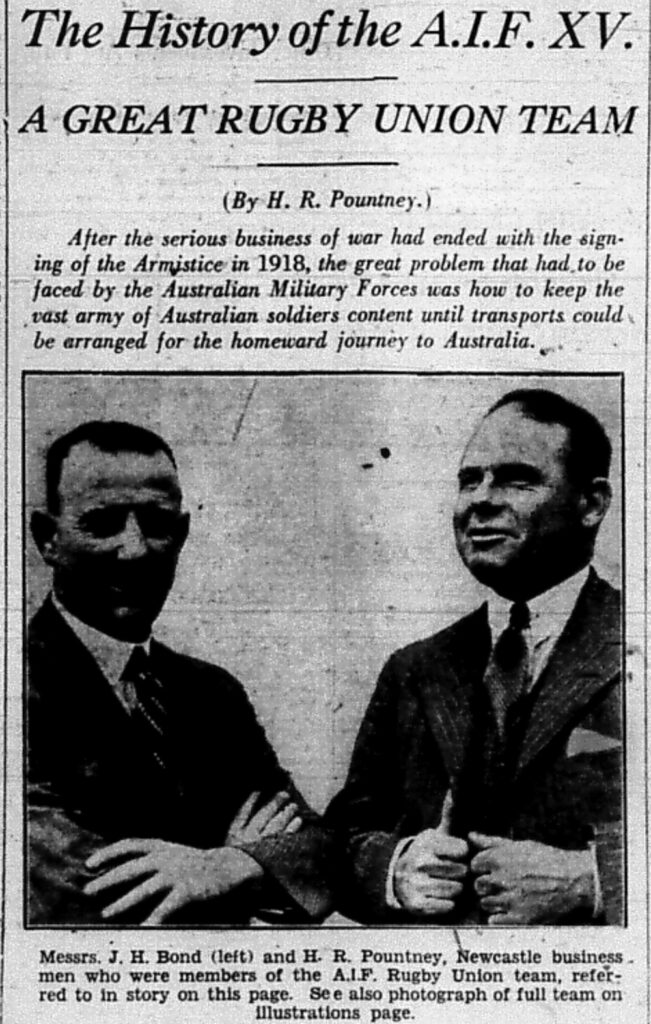



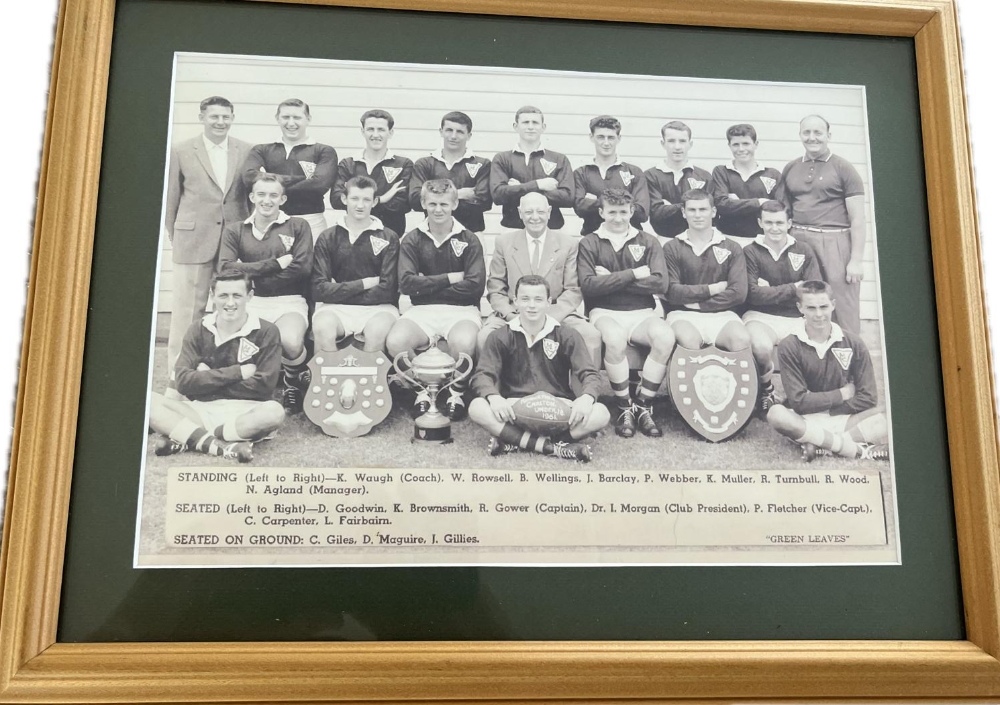
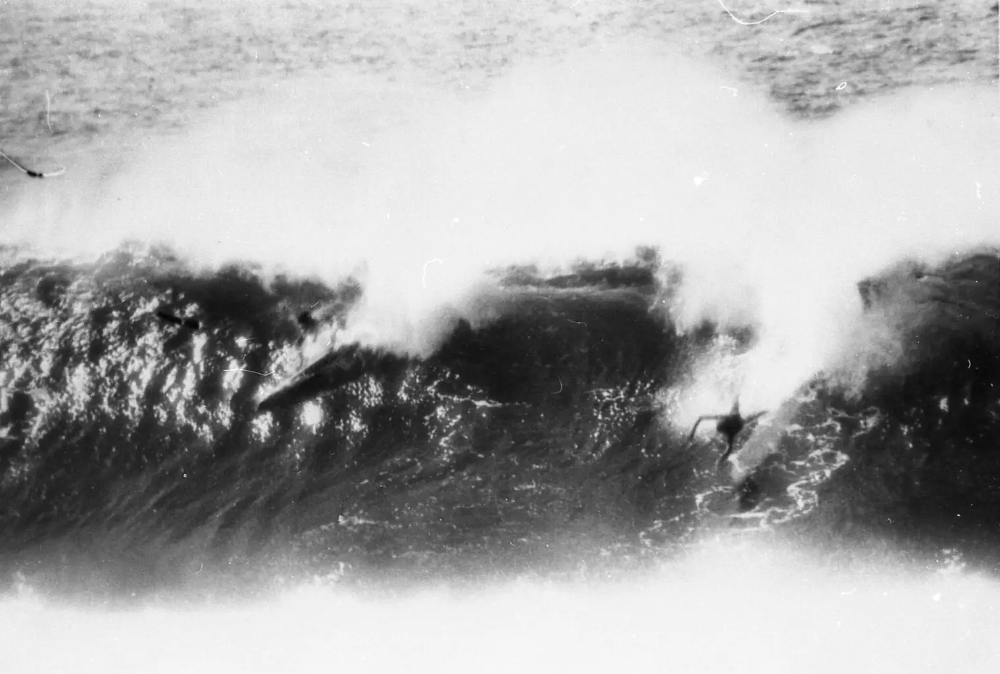
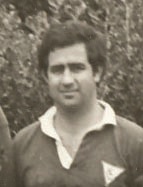

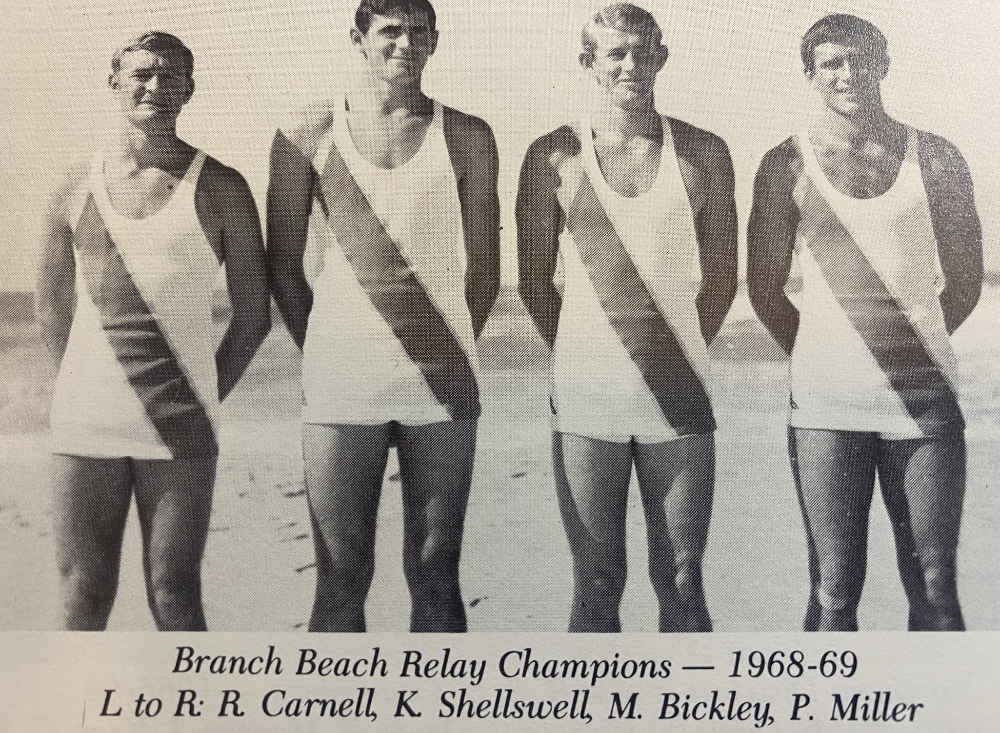








 “Mick Mewburn 100 1st Grade Games 1956”
“Mick Mewburn 100 1st Grade Games 1956”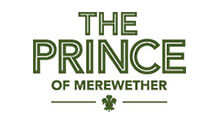













Social NewsNews and information
Merewether Carlton Rugby Club
Merewether Carlton Highlights @carltonrugby
@carltonrugby Rugby Union Club
merewethercarlton
Official account of Merewether Carlton Rugby Union Club 🟢
2024 Premiers 🏆
Est. 1930
#bleedgreen